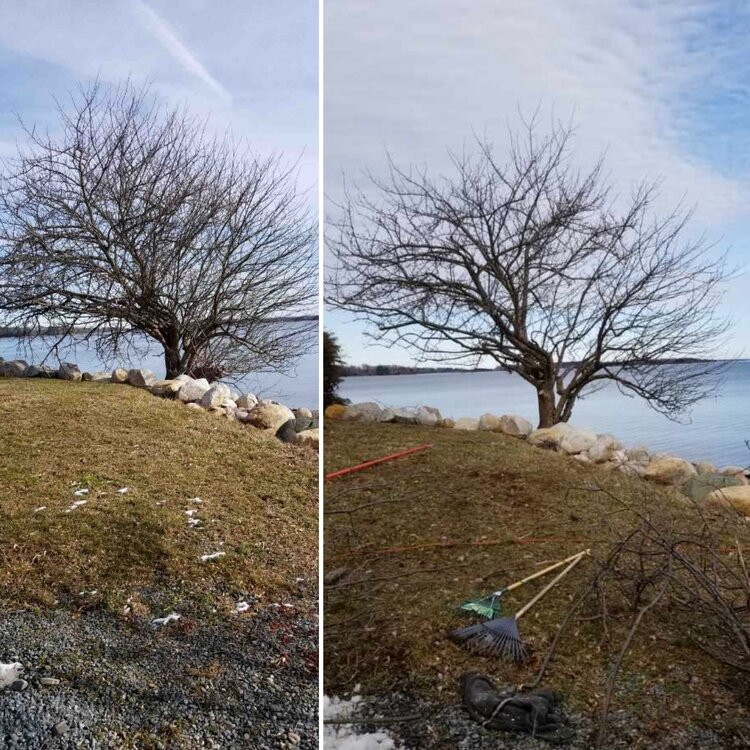WHY PRUNE A TREE TO ALLOW AIR FLOW....

When you take a close look at your trees and shrubs in your landscape gardens you will not see much happening. That’s exactly why winter is a great time to prune.
Dormant pruning relies on the same principles of maintenance pruning except that the plant is pruned while dormant to reduce stress to the plant. Dormant pruning is often more aggressive, with larger cuts being made to create more vigorous growth in the spring, which leads to a healthier shrub or tree. Training trees by scaffolding the branches may be done while dormant to eliminate any weak crotch angles or rubbing branches.
A plant may be "thinned" while dormant, thus opening the form or canopy and allowing light and air to circulate. Thinning helps reduce size: as much as one-third of the plant may be removed. As a technique, thinning also encourages healthy internal growth during the next growing season.
Dormant (winter) pruning may also be completed while plants are dormant. This technique helps reduce vastly overgrown plants and force new growth to rejuvenate the plant. The process may often take 2-3 years to complete but costs far less than re-landscaping. Shrubs such as hydrangeas, spiraea, privet, yew, forsythia, lilac, burning bush, and viburnum respond very well to this type of pruning.
Ornamental trees like crabapples, apples and cherries also tolerate and benefit from this practice. Evergreen trees such as spruce, white pine and hemlocks are best pruned in the late winter.
Every year clients ask horticulturist, Peter Atkins when it is the proper time to dormant prune shrubs and trees? Late Fall - Winter. (November – Mid March) is the best time.
During dormancy the trees store all their energy in the root systems. This means that removing any branches and wood is less stressful to the plant because it isn’t subtracting a key component to the photosynthetic process – the leaves. In some cases, this can also allow your Horticulturist to be more aggressive when selecting cuts for structure pruning. The tree will then respond during the spring, to balance the root to shoot ratio, by pushing out a more pronounced flush of new growth and encouraging a healthier, more vigorous tree or shrub.
Pruning during dormancy can help protect against harmful insects and pathogens. The dormant season also means cold, dry weather, which is in direct contrast to the wet, warm weather responsible for the spread of many tree and shrub related pathogens.
Pruning cuts can act as another entry point for these diseases because pruning cuts, although precise, are technically wounds to the tree and shrub. In some cases, wounds attract insects that themselves vector disease. So, dormant pruning lessens the probability of any unintended infections.
Assessing hazards like poor branch attachments, cankers, hollows, and deadwood, is much easier without a full canopy. Think of it like a doctor taking an x-ray. It is much better to see the complete structure of the tree and shrub before any work is done.
Also, it is easier to see where cuts can be made to lighten weight on heavy leaders, remove structural defects, and improve branch spacing.
Dormant pruning can present cost savings as well. Frozen ground and the disappearance of perennial gardens can allow equipment access to otherwise inaccessible parts of the property. This may present unique opportunities for improved work site flow, eliminating time consuming efforts by the crew to protect understory plants. This can mean the difference between several hours of labor and/or
additional heavy equipment costs.
With so many added bonuses, why wouldn’t everyone take advantage of pruning during dormancy?
Written By Peter Atkins, December 22, 2023